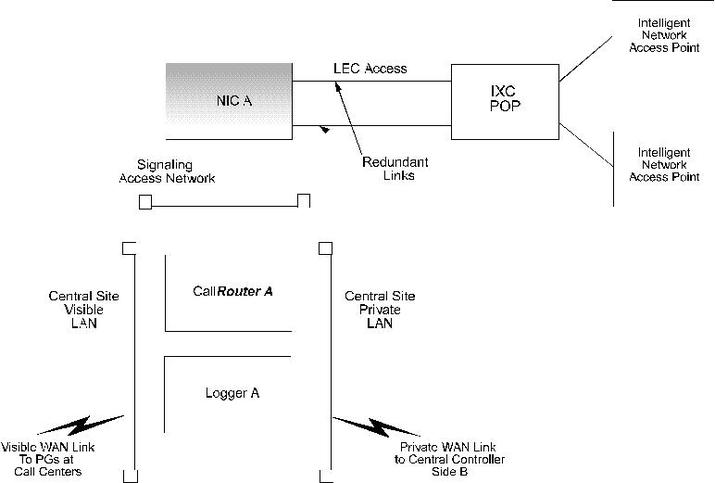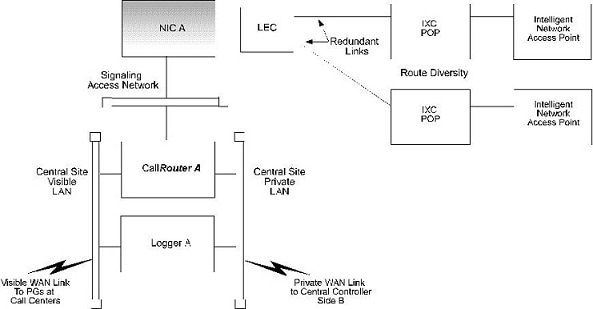ICM Software and IXC Interaction
The Network Interface Controller (NIC) is the interface between the Unified ICM software and the IXC intelligent network. The NIC uses network control links to communicate with the IXC network. These links are typically offered as part of the carrier intelligent network service.
Cisco provides a NIC to interface with the specific carrier network. For example, if you have TIM service, your Unified ICM system is equipped with a Cisco-supplied TIM NIC. If you use both AT&T and TIM as carriers, your Unified ICM system is equipped with AT&T and TIM NICs. The following figure shows the interaction between the IXC network and the Unified ICM NIC.

You can implement a Unified ICM Network Gateway for Sigtran networks. The Unified ICM Network Gateway is implemented as a separate node on the Unified ICM signaling access network. When this node is implemented, you can install the NIC software on the CallRouter server. For Sigtran networks, you can deploy a Sigtran Gateway on either the CallRouter server or a separate machine; the NIC software is installed on the CallRouter server. However, the INAP Sigtran gateway must be installed on a separate server.
The circled numbers in the preceding diagram show the specific flow of messages to and from the NIC within the Unified ICM software and the IXC network. The following sections explain the message flow.
Toll-Free Caller
As shown in the preceding figure, the flow of messages between the network and the Unified ICM begins when a caller dials a toll-free number (1).
LEC-to-IXC
The Local Exchange Carrier (LEC) determines which interexchange carrier (IXC) is providing transport for that particular number and forwards the call to the IXC switch (2).
Network Query
The IXC switch holds the call momentarily while it queries a network database to determine where to route the call (3).
ICM NIC
The network database forwards the query to the NIC and requests an intelligent routing decision (4).
Unified ICM CallRouter Process
The NIC software process receives the request, translates it into a standard format, and forwards it to the Unified ICM CallRouter process (5)
Best Destination Address Returned
The Unified ICM software selects the appropriate call routing script, assesses the skills and current real-time status of agents throughout the contact center network, and returns the best destination address back to the NIC (6).
IXC Network
The NIC sends the destination address to the IXC network (7).
Connecting Call
The network instructs the originating IXC switch to connect the call to the destination specified by the Unified ICM software (8). The total time the carrier takes to connect the call varies. However, the additional time the Unified ICM software adds to process the route request is typically less than half a second.
Supported Carrier Connections
The basic supported carrier connections and their corresponding Unified ICM software routing client (NIC) and network transport protocol information is provided in the Virtualization for Unified CCE - Additional Information page available at this URL: https://www.cisco.com/c/dam/en/us/td/docs/voice_ip_comm/uc_system/virtualization/ucce_virt_xtras.html#Virtualization_Support_for_ICM_Network_Interface_Controllers_



 Feedback
Feedback